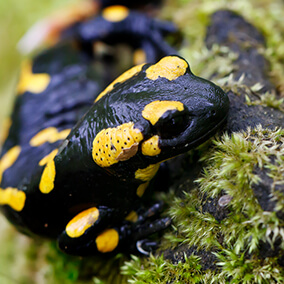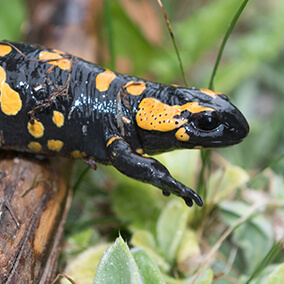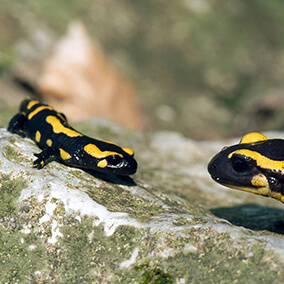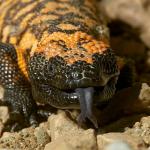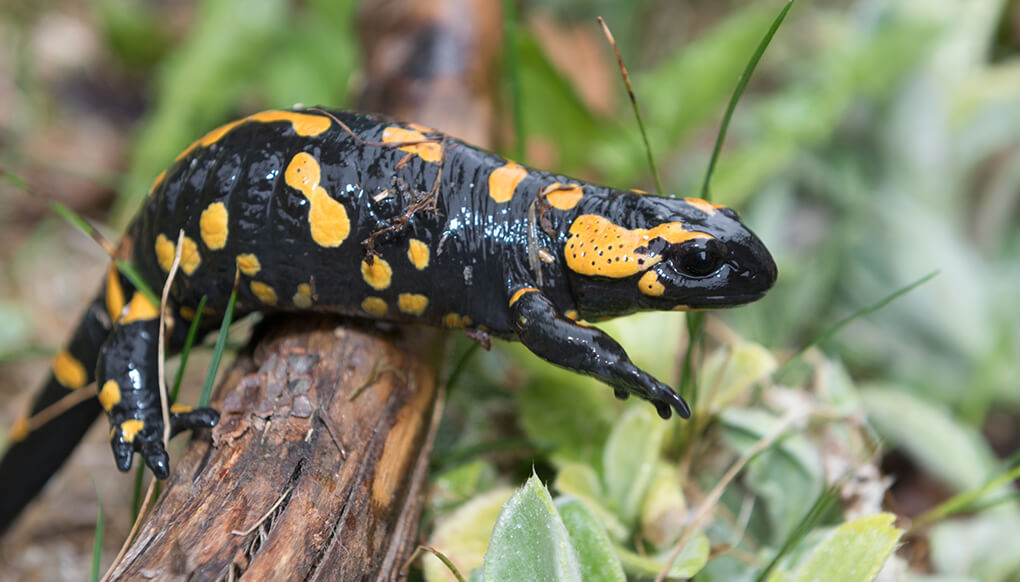
Fire salamander

Amphibians


Stable
facts


description
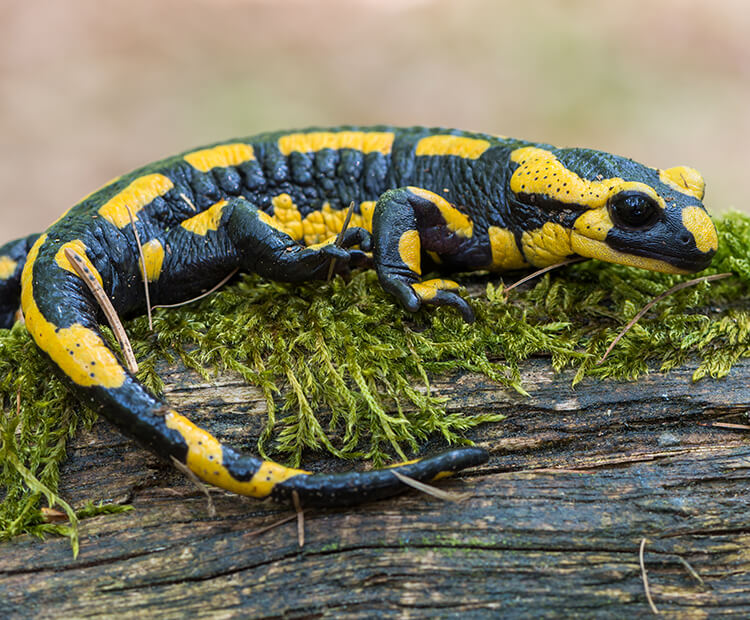
description
Colors of fire
European fire salamanders have fiery orange or yellow markings on their black skin. In ancient times, people wrongly believed that they were born in fires. Maybe that's because fire salamanders often hide under logs, and when people gathered those logs to build a fire, salamanders ran out of the flames.
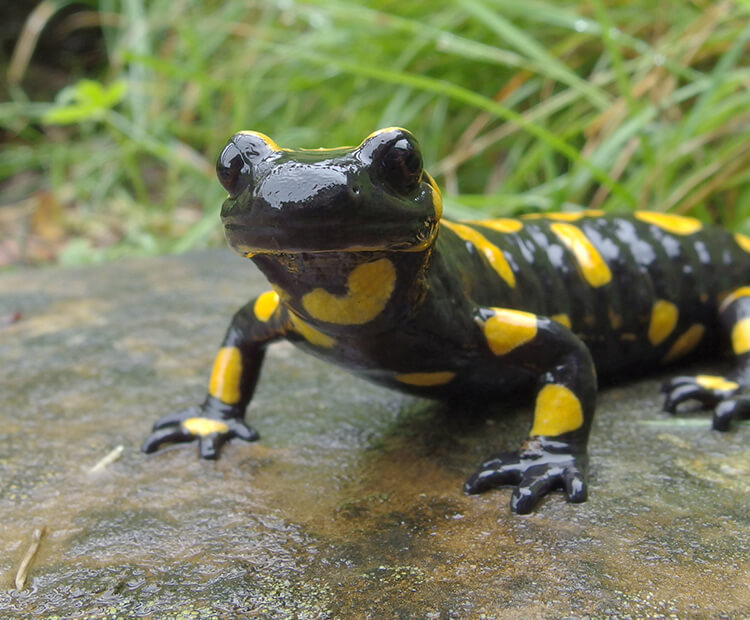
Look, but don't touch
The European fire salamander can protect itself against predators by spraying poisonous liquid from glands behind its eyes—right into the eyes or mouth of an animal it sees as a threat. Its skin also contains glands that release toxins that can kill or sicken an animal that touches it or tries to eat it.
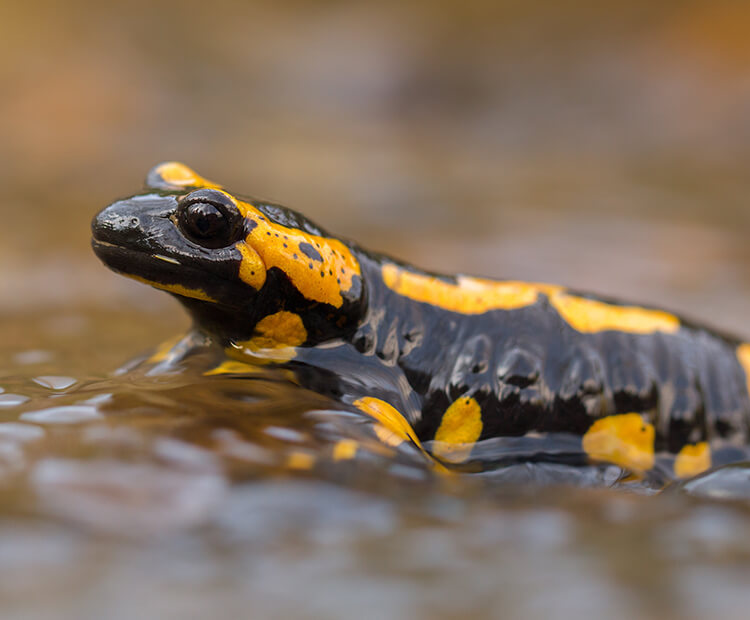
Out of sight
Most people never see fire salamanders because they are active at night instead of during the day. They spend much of their lives staying cool and moist under rocks or logs, avoiding extreme heat or cold, and only exploring their habitat when it is cool and damp.
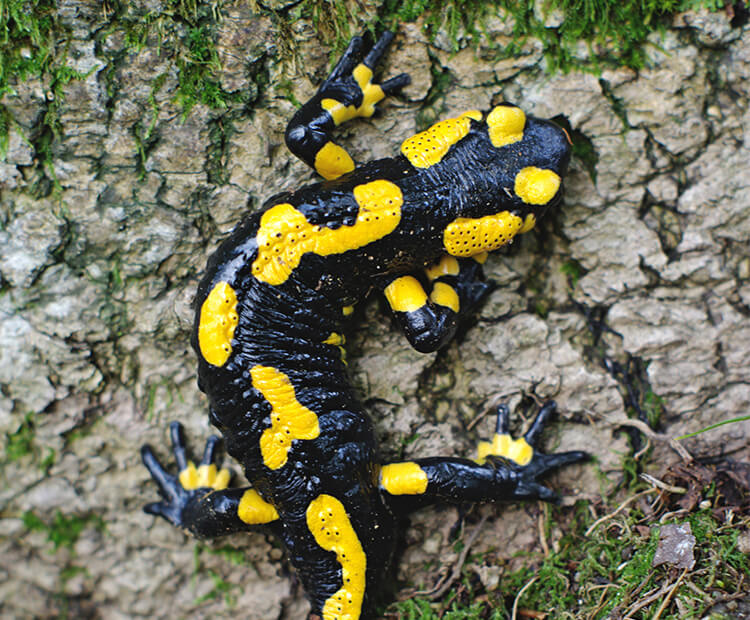
A serious threat
One of the biggest threats to European fire salamanders is a deadly fungus called Bsal, which makes it impossible for affected salamanders to absorb oxygen through their skin or to eat. Bsal has killed thousands of native salamanders in Europe since it was discovered in 2013, and it is believed to have been brought to Europe by people importing Asian newts to sell as pets.


